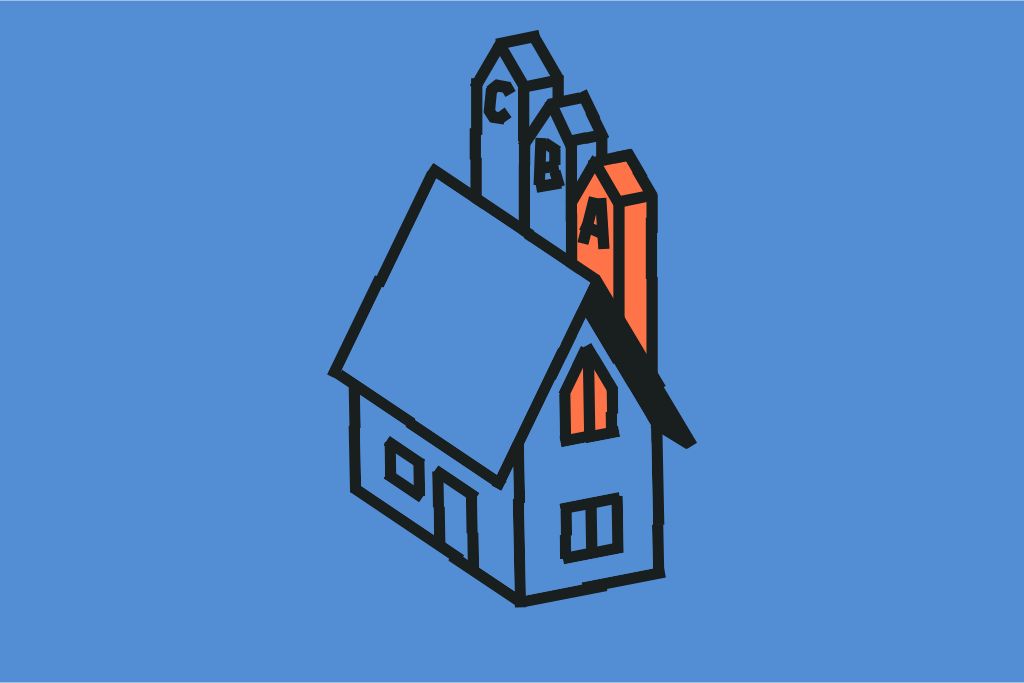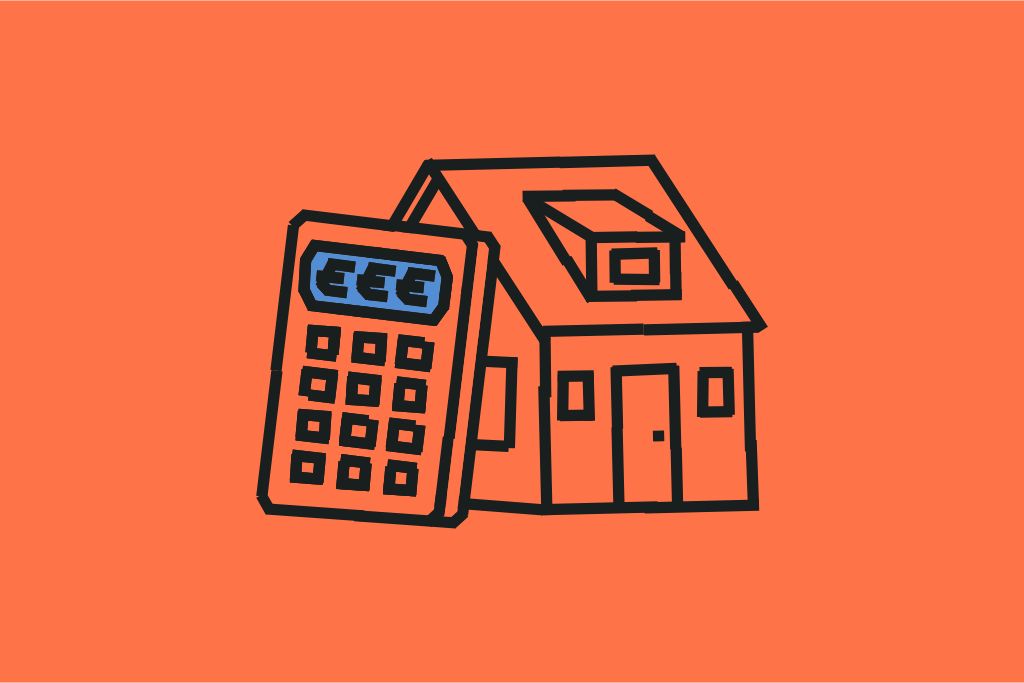What energy labels are there for homes?
Energy labels range from A++++ to G. They show how much energy your home uses per square foot. The higher the label, the more energy efficient your home is and the lower your energy costs.
{{cta}}
Energy label A to A++++
Energy label A through A++++ means that your home is very energy efficient. These homes are well insulated, often have solar panels, a heat pump or an efficient central heating boiler. Energy consumption is between 0 and 160 kWh per m² per year, and at A++++ even 0.
Features of this energy label include triple glazing, modern heating, ventilation and often self-generated energy. This ensures low energy bills, increased comfort and a high home value.
Want to know all the details? Read our extensive article on what energy label A means.
Energy label B
Energy label B means that your home is energy efficient and well insulated. Consumption is between 160 and 190 kWh per m². Homes with this label often have HR++ glass, solar panels and a modern central heating boiler.
The energy performance is better than average, so you benefit from lower energy bills and greater comfort. For many homeowners, energy label B is a good basis for making their home more sustainable.
Want to know more? Check out our extensive article on what energy label B means.
Energy label C
Energy label C means that your home has reasonably low energy consumption. It is between 190 and 250 kWh per m². Houses with this label are often reasonably insulated, with HR++ glass or solar panels.
You benefit from average energy consumption, but your energy bill is higher than for homes with energy label A or B. Many buyers still accept this label, but improvement with additional insulation or a heat pump can be a good investment.
Read more in our article on what energy label C means.
{{cta}}
Energy label D
Energy label D means an average energy consumption of 250 to 290 kWh per m². Your home is partially insulated, but often not completely. You will notice this in a higher energy bill and less living comfort.
Houses with energy label D are often built without modern sustainability measures. With insulation, solar panels or an economical central heating boiler, you can quickly make improvements. This will lower your costs and increase your value.
Read more in our in-depth article on what energy label D means.
Energy label E
Energy label E means that your home is poorly insulated and has a fairly high energy consumption of 290 to 335 kWh per m². This results in high energy costs and an unpleasant indoor climate.
Features include single glazing, old heating and little in the way of sustainability. For homeowners, investing in insulation, solar panels and a heat pump is often necessary to save on energy costs.
Want to know more? Read our article on what energy label E means.
Energy label F
Energy label F is the second lowest energy label. Houses with this label have a high energy consumption of 335 to 380 kWh per m². They are often poorly insulated, consume a lot of gas and have old installations.
This means high energy bills, low living comfort and often less favorable mortgage terms. Energy-saving measures such as insulation and solar panels provide marked improvement.
Read the detailed explanation in our article on what energy label F means.
Energy label G
Energy label G is the lowest label for homes. This label indicates that your home has a very high energy consumption of more than 380 kWh per square meter. Your home is often poorly insulated, with single glazing and outdated heating.
The consequences are clear: highest energy bills, high heat loss and low living comfort. For renters and buyers, this is the least attractive label. Only substantial preservation, such as insulation and a heat pump, offers improvement.
See all the details in our article on what energy label G means.

How can you improve your energy label?
You improve your energy label by taking energy-saving measures. Think insulation, solar panels or a heat pump. The more steps you take, the greener your home becomes, reducing your energy consumption and improving your label. These are the most commonly used measures:
- Installing draught strips
- Radiator film behind the heater
- Using LED bulbs
- Choosing energy-efficient appliances
- Installing smart thermostat
- Cavity wall insulation
- Floor insulation
- Roof insulation
- Installing HR++ glass or triple glazing
- Replacing old central heating boiler with economical central heating boiler
- Heat pump installation
- Installing solar panels
- Modern ventilation system for healthy air and reduced heat loss
Have you taken these energy-saving measures and want to know if you now get a better energy label? Simply apply for a new energy label and find out.

How do energy labels affect your mortgage?
The better your energy label, the more mortgage you may receive on purchase. This benefit applies only to energy label C through A++++. For example, with energy label C, you can borrow an extra €5,000 on purchase and with energy label A++++ up to €50,000. If you have a lower label, such as E or G, you also get extra space, but this is intended for sustainability.
So with a higher energy label (C through A++++), you have more borrowing power when you buy. This makes energy-efficient homes more attractive and affordable. If you have a lower label (E, F or G), you get extra room to invest in insulation, solar panels or a heat pump. In this way, the government encourages homeowners to make their homes more sustainable.

Frequently asked questions about energy labels
Still have questions about energy labels? You're not the only one. We have collected the most frequently asked questions and answered them briefly. So you'll know immediately about the meaning, costs and options of energy labels.
What is an energy label?
An energy label indicates how energy efficient your home is. It ranges from A++++ (very energy efficient) to G (very high energy consumption). The label shows how much energy your home uses per square meter.
What is the best energy label?
The best energy label is A++++. This means your home uses almost no energy or even returns energy. Homes with this label have excellent insulation, often have solar panels, a heat pump and triple glazing. You benefit from a low energy bill, great living comfort and a higher home value.
How do I determine my home's energy label?
Your home's energy label is determined by a licensed energy advisor. This person does an inspection, looks at insulation, windows, heating and energy consumption and officially registers the label. Your energy label is then valid for 10 years. Want to know your energy label? Request an energy label easily.
What does an energy label application cost?
On average, applying for an energy label costs around €300. Depending on house type and size, prices are usually between €225 and €500+. For an apartment you are often cheaper, while a large detached house costs more. The label is valid for 10 years and mandatory when selling or renting.
Can an old house get energy label A?
Yes, even an old house can get energy label A with the right energy-saving measures. Consider insulating walls, roof and floor, HR++ or triple glazing, solar panels and a heat pump. In this way, you greatly reduce energy consumption and improve energy efficiency. This makes energy label A achievable even for older homes.
{{vragen}}



